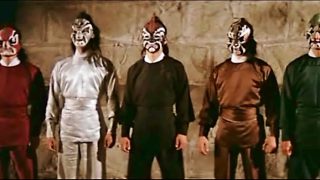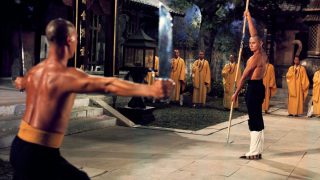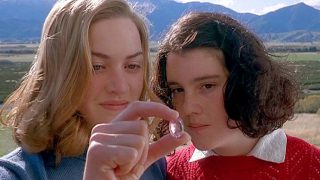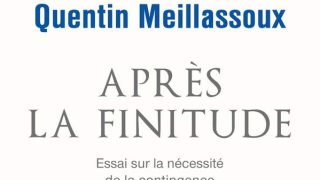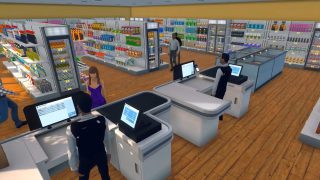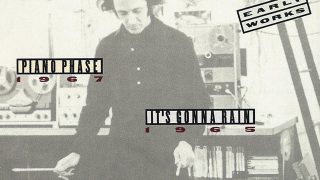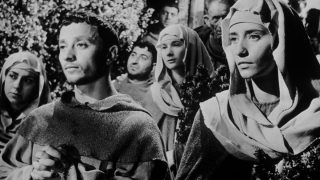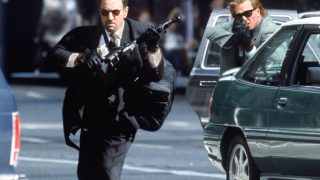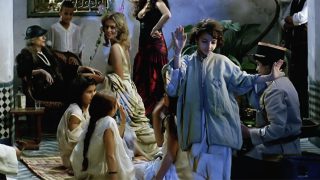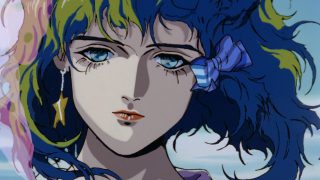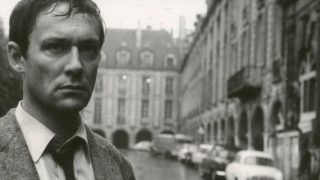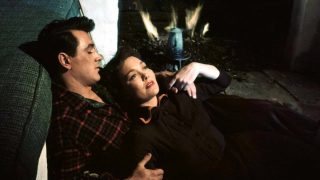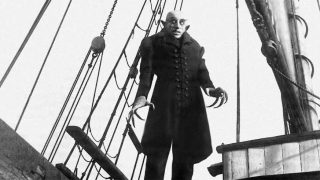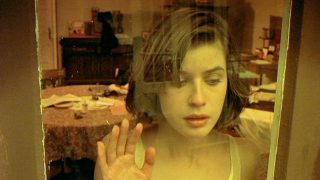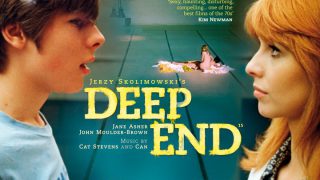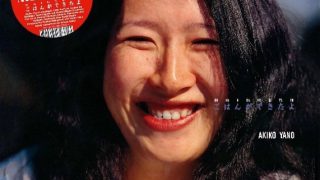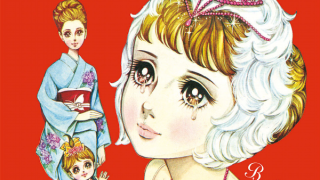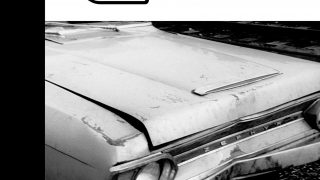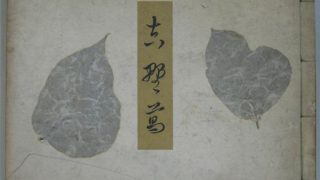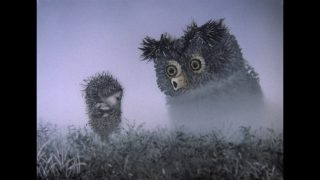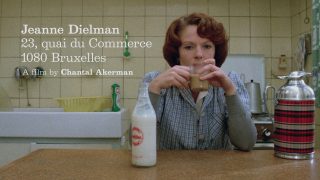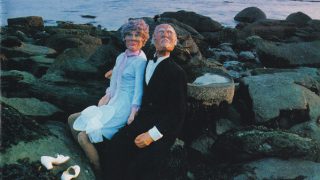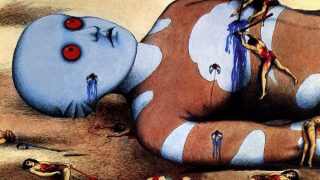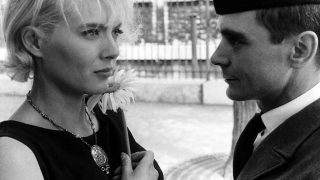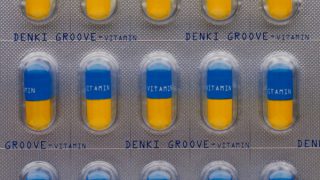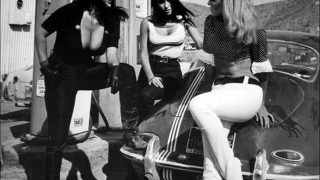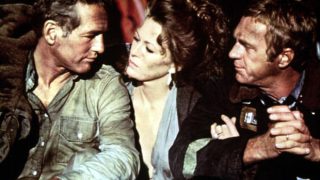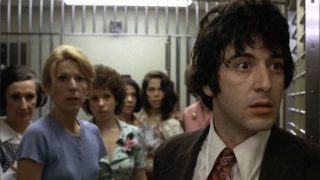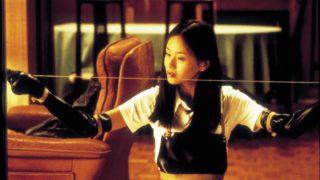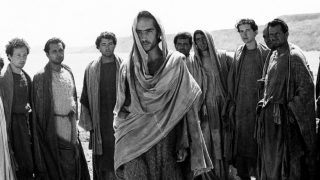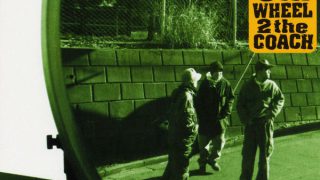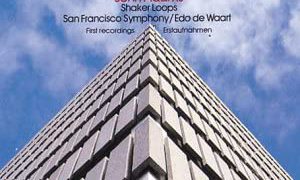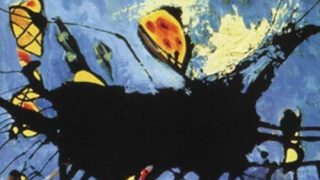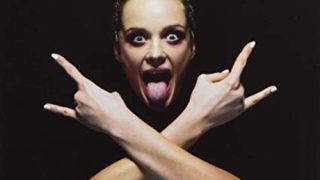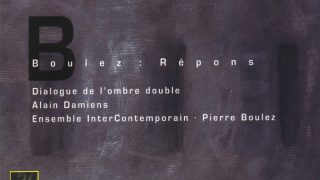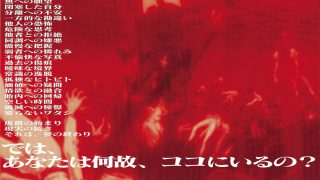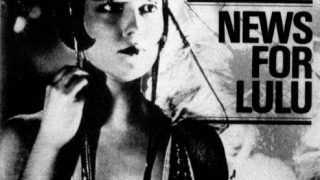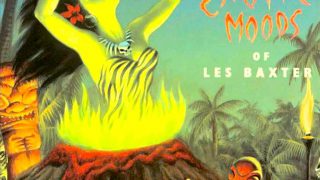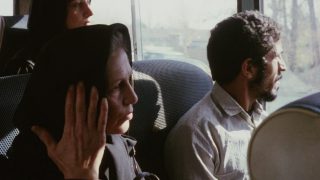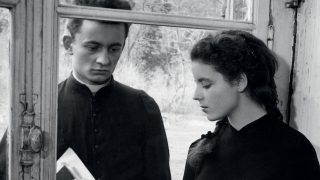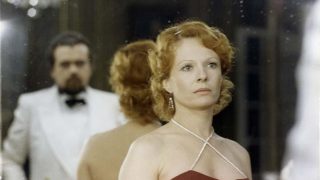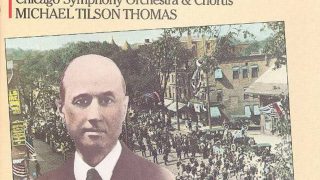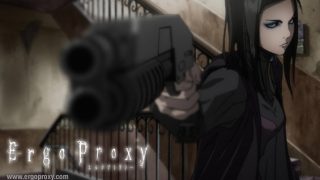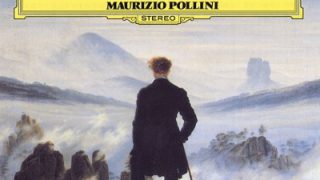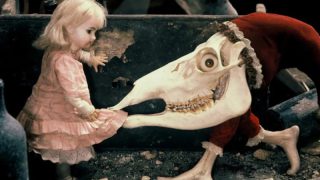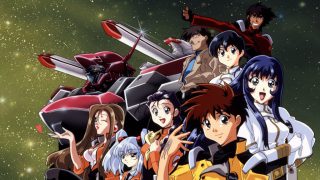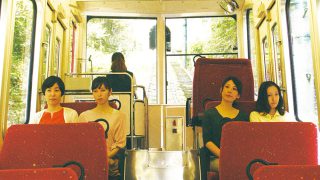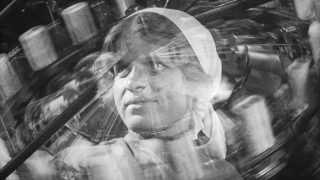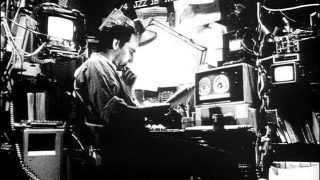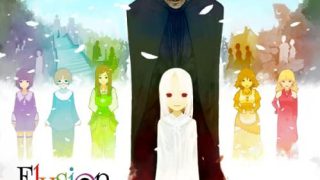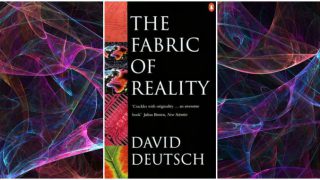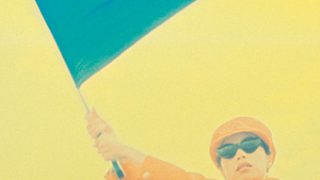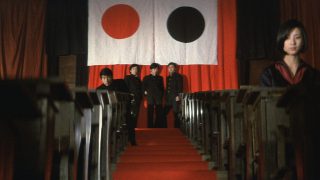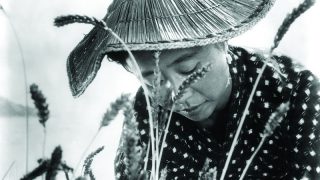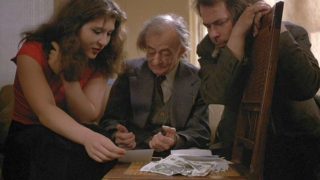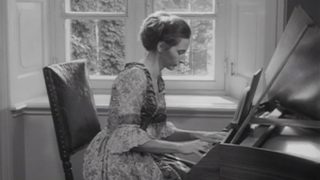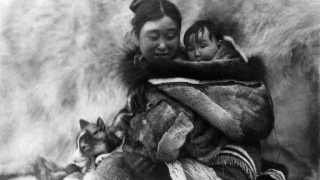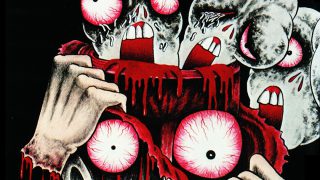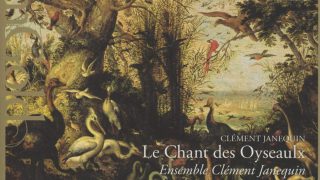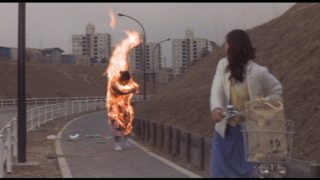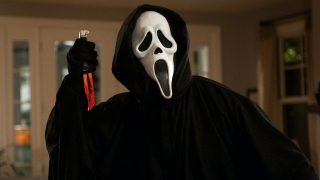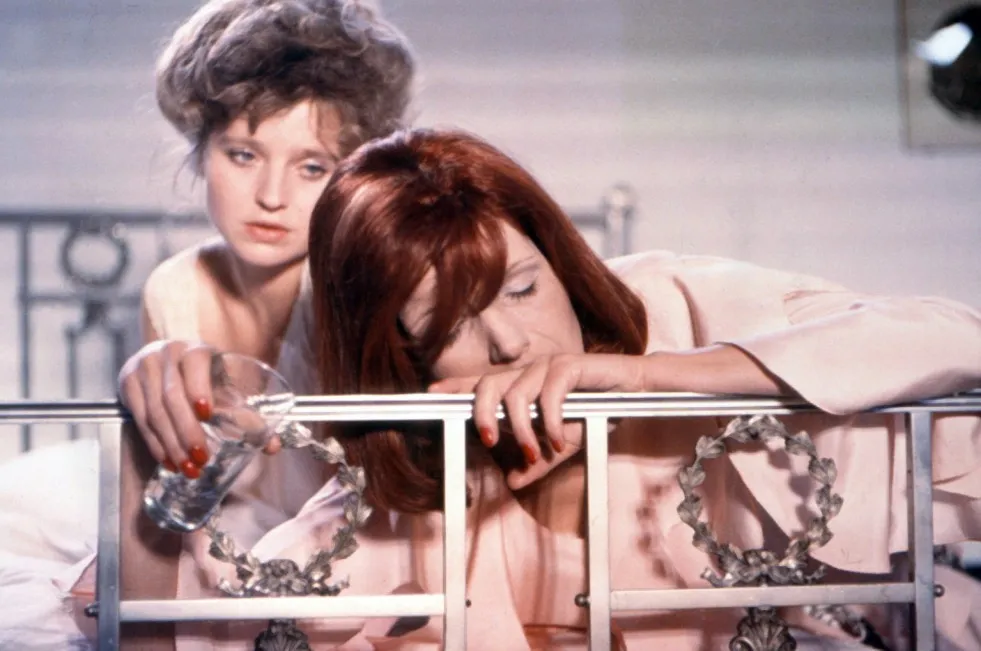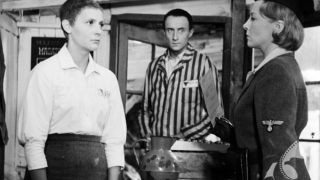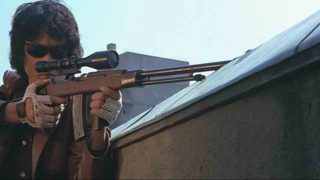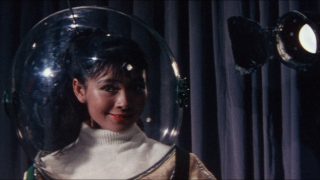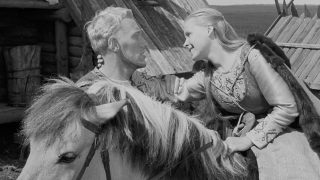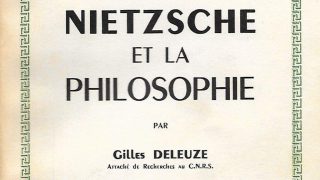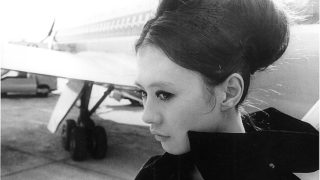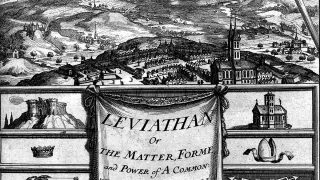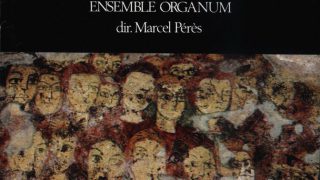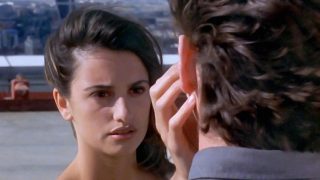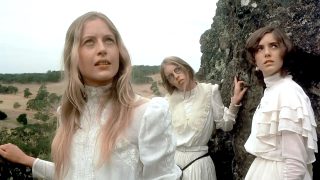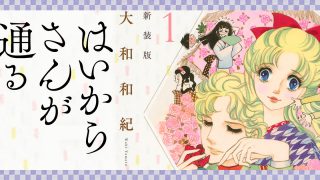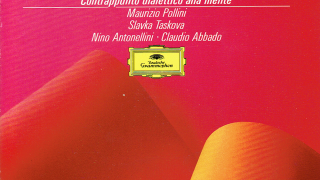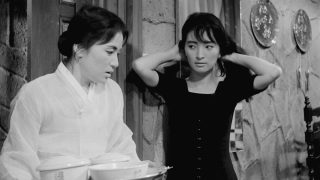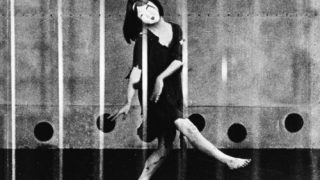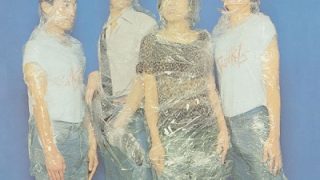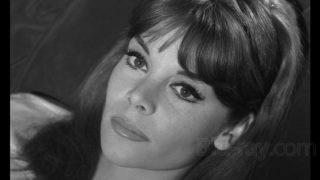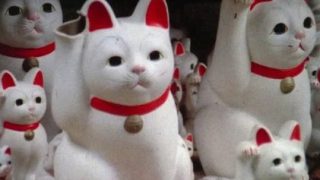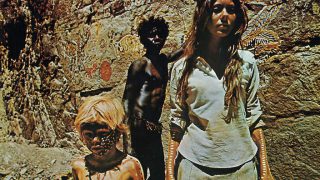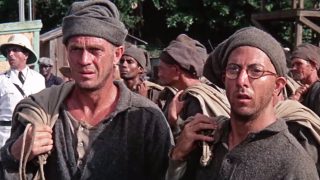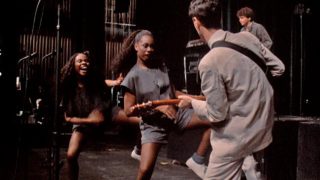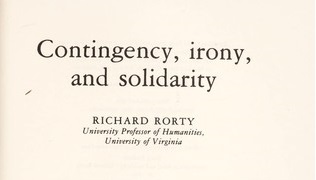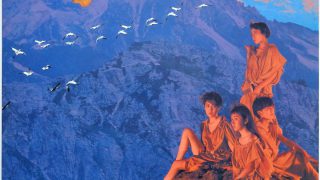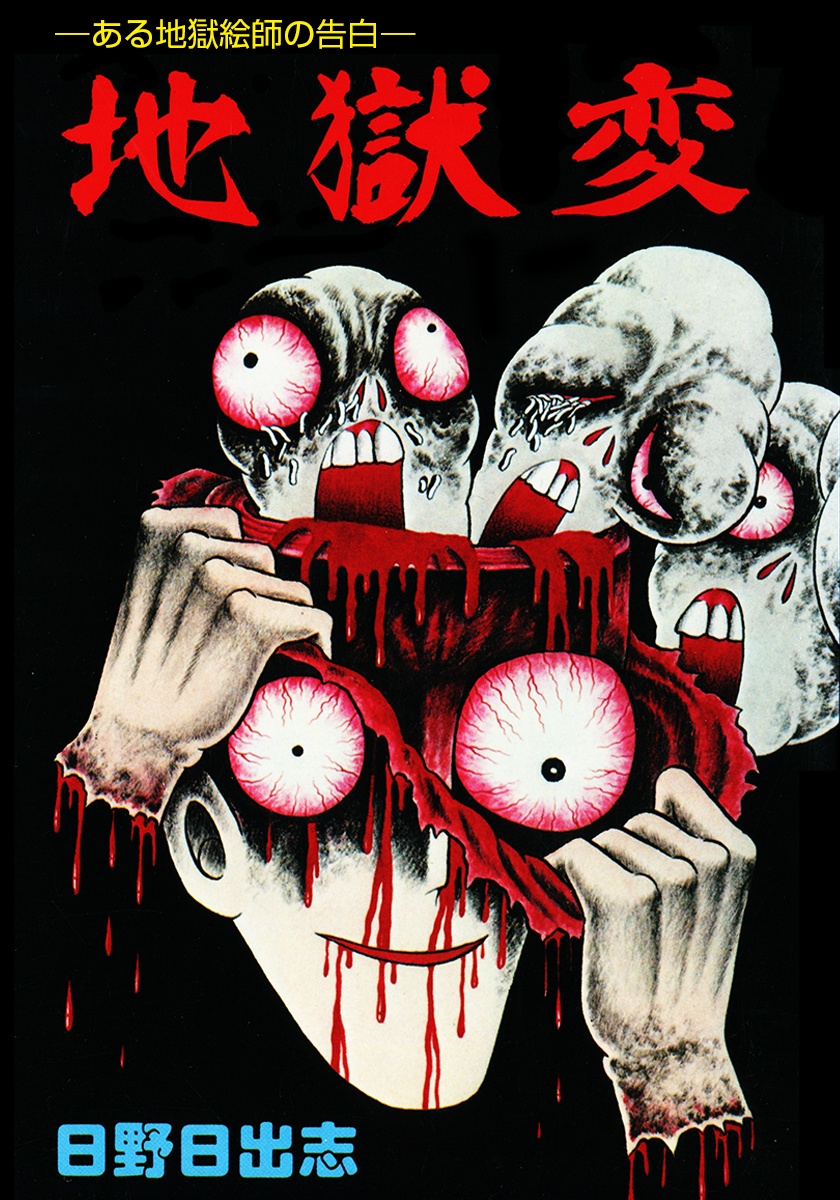- Overview
- About the Author
- Publication History
- Commentary
- Plot (Spoiler Alert)
- “Oh Hell!“ by Shin-iye Antsu (Xīngyě Ānsī)
- Prologue
- The 1st Panorama of Hell: The Guillotine
- The 2nd Panorama of Hell: The Bottomless River of Hell
- The 3rd Panorama of Hell: The Crematorium of Headless Corpses
- The 4th Panorama of Hell: The Graveyard of Executed Prisoners
- The 5th Panorama of Hell: The Dreams of Crazy Kids
- The 6th Panorama of Hell: Hell Tavern
- The 7th Panorama of Hell: Three Generations of Tattoos: Part 1: The Snakeman
- The 8th Panorama of Hell: Three Generations of Tattoos: Part 2: The Crimson Bat
- The 9th Panorama of Hell: Three Generations of Tattoos: Part 3: The Rising Dragon
- The 10th Panorama of Hell: Mad Mother
- The 11th Panorama of Hell: The Phantom Empire
- The 12th Panorama of Hell: The Days of a Child’s Dreams
- The 13th Panorama of Hell: Panorama of the Final Hell
Overview
“Panorama of Hell“ (original Japanese title: Jigokuhen) is a 1982 manga by Japanese manga artist Hideshi Hino, who is known for his unique style of horror manga characterized by “grotesque and lyricism.”
It is a fantastical horror manga depicting a painter’s mental scenery of hell on earth as an apocalyptic vision. The painter is fascinated by the beauty of blood, and confesses about the cursed fate of his own bloodline for three generations before and after World War II.
“Panorama of Hell“ is one of Hino’s most well-known works in his long-length manga.
The characteristic of this work is the introduction of the author’s autobiographical elements.
The original Japanese edition was published as a book by Hibari Shobō in 1982.
It has been translated into English, Italian, French, Spanish, and Portuguese.
About the Author
Hideshi Hino was born in 1946 in Qiqihar, northeast China (former Manchuria), which had been occupied by Japan until Japan surrendered in 1945 at the end of World War II. Hino’s parents returned to Japan with him in 1946, and then Hino grew up in Tokyo.
Hino had been fond of Shigeru Sugiura’s comedy manga since his childhood.
He debuted as a manga artist with his two new face award-winning short manga works: “Tsumetai Ase (Cold Sweat)“ (published in the manga magazine “COM“ in 1967) and “Doro Ningyō (Mud Doll)“ (published in the manga magazine “Garo“ in 1968).
Hino drew his short manga “Zoroku’s Strange Disease“ inspired by Ray Bradbury’s collection of science fiction short stories “The Illustrated Man“ (1951), and he published it in the manga magazine “Shōnen Gahō“ in 1970. It became a turning point for him to establish his own unique style mainly characterized by “grotesque and lyricism”, and he afterward became known as a horror manga artist with a cult following in and outside Japan.
Hino’s horror manga is characterized by comedy manga-style character design influenced by Shigeru Sugiura, characters with big round eyes, grotesque depictions that evoke a feeling of physiological disgust, such as decomposing corpses with maggots, obsession with childhood, lyricism that depicts sadness and grudge of social outcasts, fairy-tale-like fantasy, and the introduction of autobiographical elements, which shows an influence from Yoshiharu Tsuge.
In his horror manga, “Zoroku’s Strange Disease“, “Lullabies from Hell“ (1971), “Panorama of Hell“, and “The Red Snake“ (1983) are known as his major works.
He is also known for writing and directing two works in the “Guinea Pig“ series of horror videos: “Guinea Pig 2: Flower of Flesh and Blood“ (1985) and “Guinea Pig: Mermaid in a Manhole“ (1988).
Between 2005 and 2023, Hino had taught as an associate professor and then a professor in the Character Modeling Department of the Faculty of Fine Arts at Osaka University of Arts.
A documentary film focusing on the real picture of Hino, “Densetsu no Kaiki Manga-ka: Hino Hideshi (Legendary Horror Manga Artist: Hideshi Hino)“ (directed by Hiroki Terai) was released in Japan in 2019.
Publication History
Japanese Edition
In 1982, this work was published with the title of “Aru Jigoku Eshi no Kokuhaku: Jigokuhen (Confessions of a Hell Painter: Panorama of Hell)“ as one of “Hideshi Hino’s Shocking Theater“ series by Hibari Shobō.
In 1993, it was republished as a hardcover book with the title of “Jigokuhen (Panorama of Hell)“ by Seirindō. It included five color frontispieces (eight pages), a commentary by writer Atsushi Hachisu, and the author’s note.
In 2005, it was republished by Magazine Five (released by Seiunsha). It included Hino’s long interview at the end of the book.
In 2020, it was republished as an ebook by Goma Books.
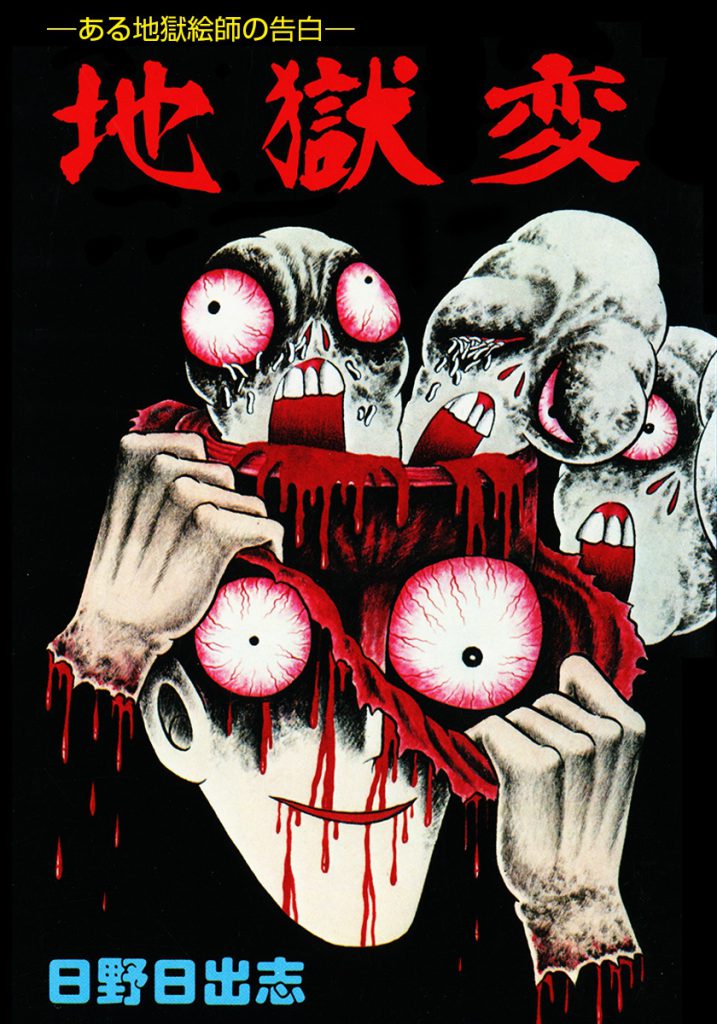
“Panorama of Hell“ was included in the book “Hideshi Hino Best Works”, which was published by Ohta Publishing in 2023, along with “Zoroku’s Strange Disease” and “Lullabies from Hell”.
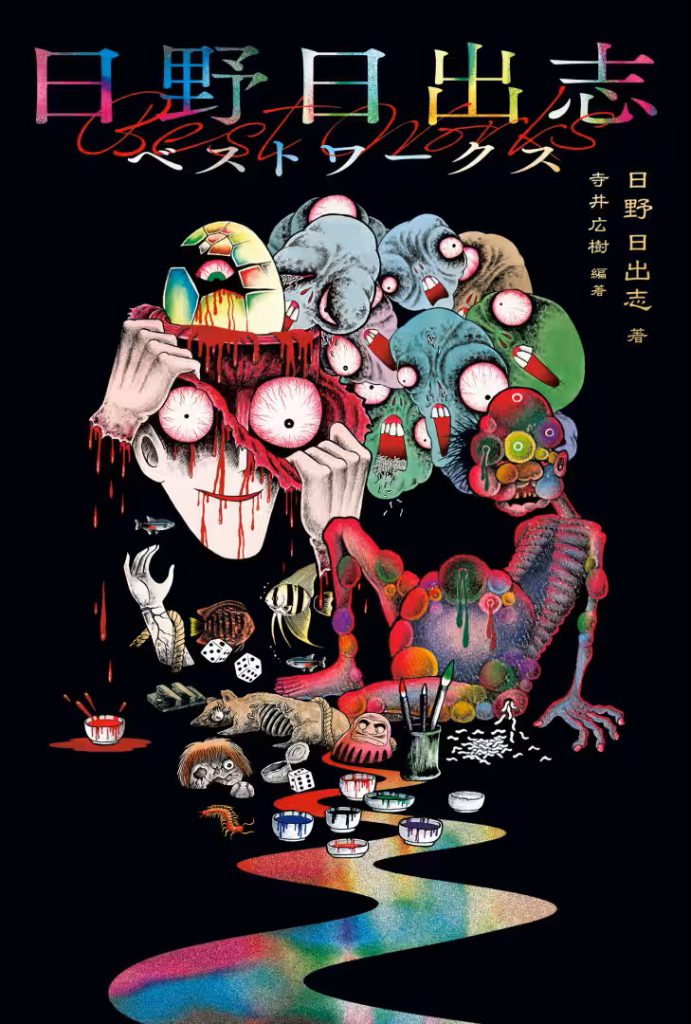
English Edition
In 1989, the English edition was published with the title of “Panorama of Hell“ by Blast Books. One of the English translators is Japanese special effects artist Screaming Mad George.
In 2023, the new English edition was published by Star Fruit Books.
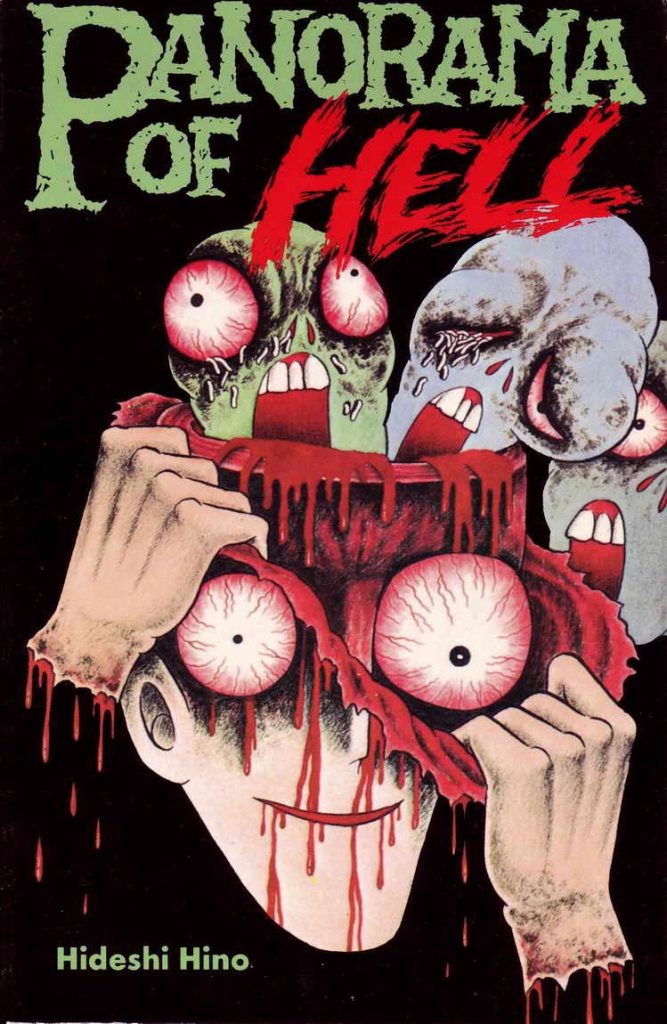
Italian Edition
In 1992, the Italian edition was published with the title of “Visione d’inferno“ by Telemaco Comics.
In 2019, the new Italian edition was published by Dynit Manga.
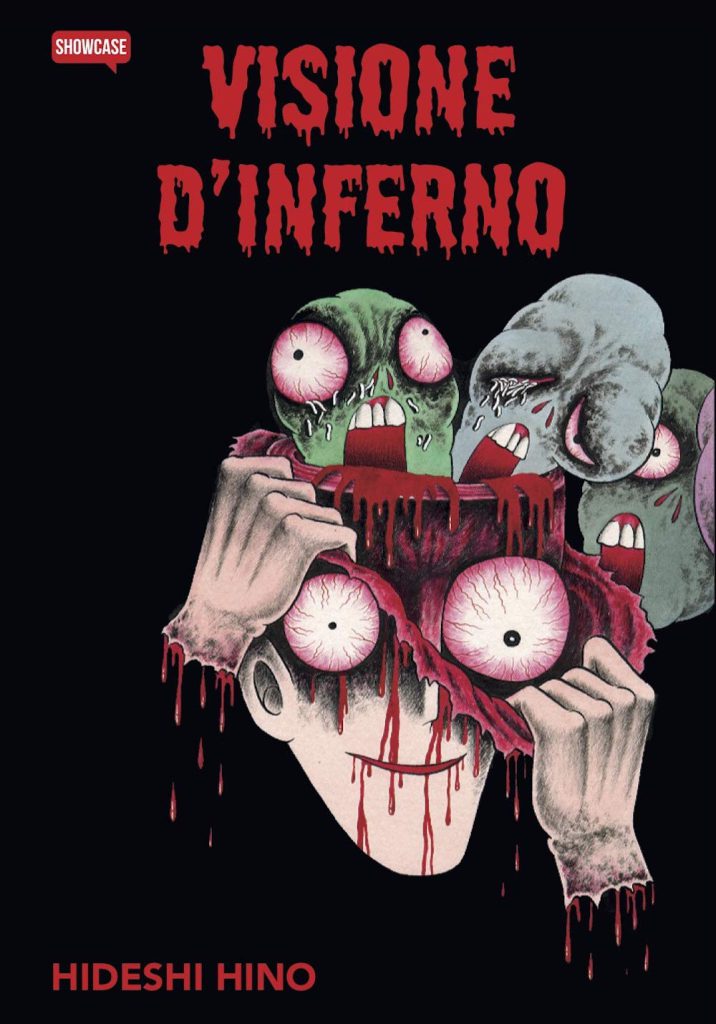
French Edition
In 2004, the French edition was published with the title of “Panorama de l’enfer“ by Éditions IMHO.
It was nominated for Best Album at the 2005 Angoulême International Comics Festival.
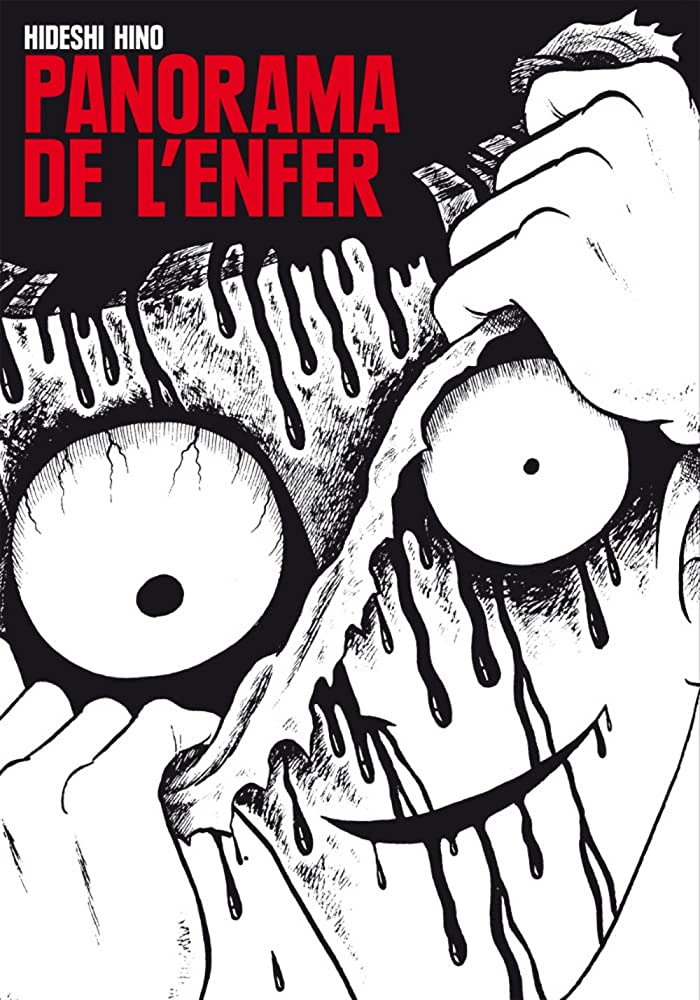
Spanish Edition
In 2006, the Spanish edition was published with the title of “Panorama infernal“ by Ediciones La Cúpula.

It was republished with a new cover in 2018.
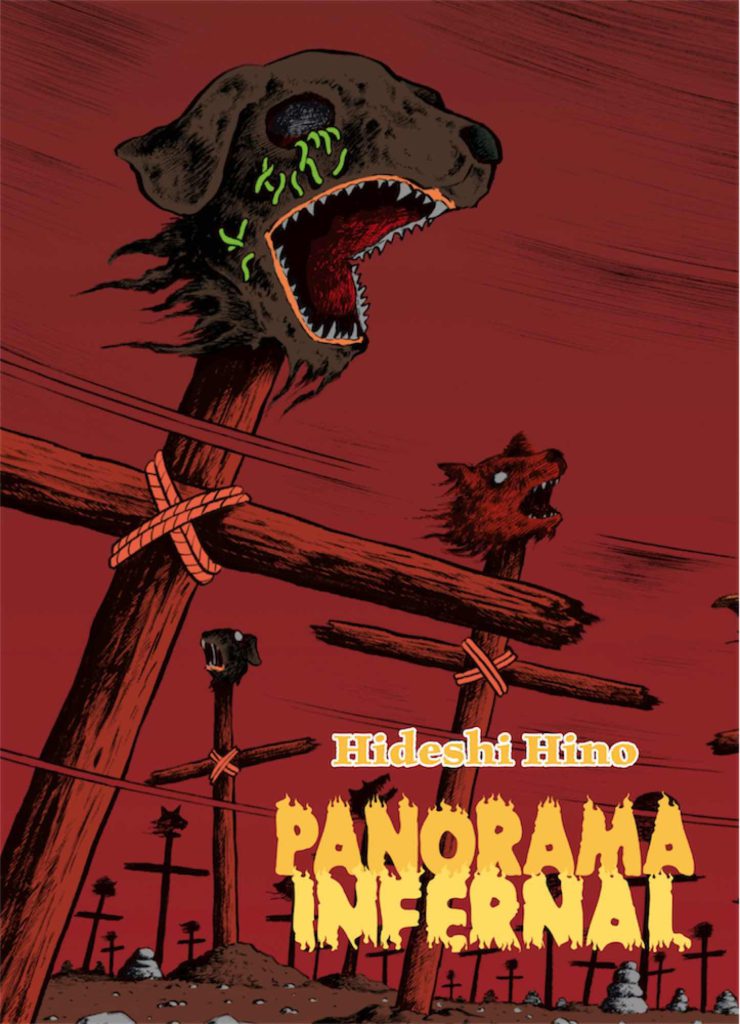
Portuguese Edition
In 2006, the Portuguese edition was published with the title of “Panorama do Inferno“ by Conrad in Brazil in 2006, and by Sendai Editora in Portugal in 2021.

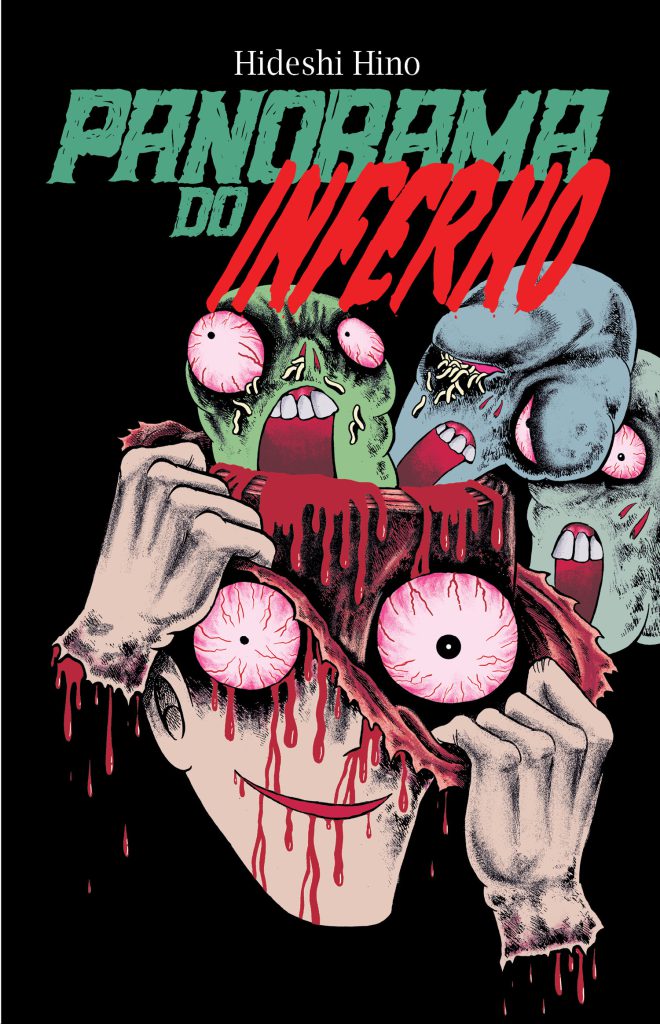
Commentary
“Panorama of Hell“ is Hino’s masterpiece ranked with his “The Red Snake“.
Hino himself states that both “Panorama of Hell“ and “The Red Snake“ are his autobiography works and they make one pair together. In both works, his own autobiographical episodes and childhood memories are sublimated into fantastical world views.
“Panorama of Hell“ is an artistic horror manga, in which Hino interweaved his autobiographical episodes with fictional settings to depict a conceptual world view of apocalyptic hell (inferno). In this work, Hino follows through on his unique aesthetic, in which grotesqueness is inverted into beauty.
“Panorama of Hell“ is a full-length work based on Hino’s short manga “Lullabies from Hell“ (1971) as its prototype.
In “Lullabies from Hell“, a manga artist named “Hideshi Hino“, who has power to curse people to death, talks about his childhood, and in the end he says to the reader, “You will definitely die three days after seeing this manga.”
“Panorama of Hell“ follows the form of the protagonist’s monologue and the ending of “Lullabies from Hell“. In both works, the curse of the protagonist is connected to the real world, including the readers, in the ending.
In this work, the episodes concerning the family of the painter (grandfather, father and younger brother) and their return from Manchuria are partially based on the facts about Hino’s lineage and birth. However, in the ending of the story, it is revealed that the painter’s family (mother, younger brother, wife and children) is a product of the painter’s delusion. This metafictional narrative structure indicates that this work depicts the delusion of the painter as a mental scenery.
Its polished drawing is also one of the remarkable points of this work. Hino’s drawing style is characterized by enhanced contrast between black and white, and delicate shading created by fine lines. Each panel is beautiful, like a painting. Cinematic techniques such as zooming in are also effectively used.
Plot (Spoiler Alert)
The story of this work is narrated in the form of a monologue by a painter.
This work consists of the prologue and thirteen chapters (hell paintings).
“Oh Hell!“ by Shin-iye Antsu (Xīngyě Ānsī)
Before the prologue, a poem entitled “Oh Hell!“ is quoted as an epigraph from “Hell Poems“ by a fictional character named “Shin-iye Antsu (Xīngyě Ānsī)“. The name Shin-iye Antsu is the Chinese reading of Hino’s real name, Anji Hoshino.
Hino’s other two works, “Hell Baby“ (1982) and “The Red Snake“ also include quotations from “Hell Poems“ by Shin-iye Antsu.
Prologue
A painter, who is fascinated by the beauty of blood, stays home every day, doing nothing but painting pictures of hell.
He cuts up his body and uses the flowing blood as paint.
He has started to work on a magnum opus that could be considered his life’s work. It is an apocalyptic panorama of hell, which depicts the end of the world.
He starts talking about the hell paintings he has created up to now.
The 1st Panorama of Hell: The Guillotine
A guillotine is towering in front of the painter’s house.
A lot of death-row inmates are beheaded every night there.
Their decapitated heads are transported by freight train. The railroad tracks are stained with red blood.
The red flowers bloom, sucking the blood, and bear red fruits of hell, which are said to drive humans crazy when they eat them. Unfeathered birds are pecking at the fruits.
The 2nd Panorama of Hell: The Bottomless River of Hell
A bottomless river of hell is flowing alongside the railroad tracks. The river water is dyed red with blood from the railroad tracks.
A large number of corpses of humans or animals are floating or sinking on the surface of the river.
The 3rd Panorama of Hell: The Crematorium of Headless Corpses
Next to the painter’s house, there is a crematorium that specializes in burning the headless corpses of guillotined prisoners.
Countless corpses are automatically transported from the guillotine to the ovens through underground pipelines.
The 4th Panorama of Hell: The Graveyard of Executed Prisoners
Behind the painter’s house, there is a graveyard of executed prisoners that extends endlessly in all directions.
Animal heads sit atop the grave markers.
At night, headless ghosts appear from their graves, and all night they wander through the graveyard, searching for their heads.
The 5th Panorama of Hell: The Dreams of Crazy Kids
The painter tells about his two children.
His daughter Kyōko (means “Crazy Girl“) plays in the room, sketching animal corpses.
Kyōko’s younger brother Kyōta (means “Crazy Boy“) runs around outside and plays with animal corpses.
Sometimes they quarrel, but they usually get along fine.
They are singing together, watching the beheading.
The 6th Panorama of Hell: Hell Tavern
The painter tells about his wife. She runs a tavern called Hell Tavern on the main street.
The customers are all ghosts of headless corpses from the graveyard.
The 7th Panorama of Hell: Three Generations of Tattoos: Part 1: The Snakeman
The painter tells about his grandfather.
His grandfather was a roving gambler who traveled from one gambling den to another all across Japan. He was a yakuza in Jōshū (current Gunma Prefecture), and he had a large serpent tattooed across his back, so he was nicknamed “Orochimaru (Snakeman) of Toné (Gunma Prefecture)“.
The family was very poor. His grandmother worked in the fields and could barely support the family.
His father and his father’s sister hated his grandfather because his grandfather got drunk and used violence on his grandmother.
On a snowy night, his grandfather got mixed up in a dispute in a gambling den, and he died covered in blood. His grandfather cut open his abdomen with a dagger, and then a lot of dice spewed forth from the cut.
The following spring his grandmother was brutally murdered by a pervert.
His father and his father’s sister were sent away to work in different places.
The 8th Panorama of Hell: Three Generations of Tattoos: Part 2: The Crimson Bat
The painter tells about his father.
His father had a crimson bat tattooed on his back.
His father also became a vagabond, following in his grandfather’s footsteps.
His father moved to Manchuria and he was married there.
His father started a pig farm, but the war between Japan and China began, and he was drafted into the army.
His father kept killing people in the battlefield in order to win the war quickly and to return to his decent life, but the atomic bombings of Hiroshima blew it all up.
When his father returned to Japan with his family, they went through a living hell, and his mother went insane.
Whenever his father drank sake, his father used violence on him.
At that time, his father was working in a slaughterhouse.
On a snowy day, he saw his father dying in Hell River. He saw the crimson bat flying out of his father’s back.
The 9th Panorama of Hell: Three Generations of Tattoos: Part 3: The Rising Dragon
The painter tells about his younger brother.
His brother was an alcoholic, and he had a rising dragon tattooed on his back.
As a youth his brother was a juvenile delinquent who fought all the time.
His brother was found almost dead and buried in the snow beside Hell River, just like their grandfather. His skull was cracked open.
He had brain surgery and his life was saved, but he fell into a coma, and he never woke up again.
The morning after he was released from the hospital, he turned into a blob of flesh with the rising dragon tattoo remained.
The 10th Panorama of Hell: Mad Mother
The painter tells about his mother.
When the painter was a child, his mother had gone insane, and she unleashed a fierce attack on him.
She currently believes that a pig’s head is her son, and is abusing the painter’s brother who has turned into a blob of flesh.
The 11th Panorama of Hell: The Phantom Empire
The painter thinks about a living hell in his native country Manchukuo after Japan’s defeat.
On August 6, 1945, a gigantic emperor from hell appeared with a flash and a tremendous roar in the sky over Hiroshima, and it sucked up the blood of hundreds of thousands.
A single beam flew from inside the flash to Manchuria over the Korean Peninsula, and hit his mother. At that instant, he was conceived in his mother’s womb.
From inside the womb, he watched the bloody hell starting with the invasion by the Russian army, who committed massacre, plundered, and forcefully took hostages away to Siberia.
The painter was born in 1946 without anyone’s blessing.
Nine months later, in the snow, his parents carried him in the line of refugees returning to Japan. Faced with hunger and cold, there were babies, sick and elderly people who couldn’t keep up and were strangled, poisoned or committed suicide.
In the limit of fatigue and fear, his mother went insane.
The 12th Panorama of Hell: The Days of a Child’s Dreams
The painter recalls his childhood.
When he was a child, everyday he played hellish games, slaughtering animals brutally, and then drawing pictures of the things he did in the games.
He was always bullied by the delinquent brothers who lived in his neighborhood. He thought to himself that he could paint a good hell painting if their house caught on fire.
He made a clay model of the emperor of hell (atomic bomb’s mushroom cloud), poured the blood of sacrificial animals onto it, and made a wish to it that their house would catch on fire.
Then, the house of the delinquent brothers caught on fire, and they and their family turned to ashes along with their house. He discovered his incredible power and was mad with joy.
Since then he has kept creating hell paintings, killing hundreds of thousands of people.
The 13th Panorama of Hell: Panorama of the Final Hell
The painter wants to create a bigger-scale, real hell painting.
He causes the Falklands War (1982) and proves that his power reaches foreign countries too.
His real goal is to press the button and set off all the world’s nuclear weapons.
By doing so, he tries to paint a real and big hell painting, which is his life’s work.
He kills his beloved family with an ax before the real hell arises, but in reality his wife, children and mother are artifacts (dolls), and his brother is a pig carcass.
He goes outside, and eats the red fruits of hell in the snow.
He throws an ax at the wall in front of his house and breaks it down.
Outside the broken wall, there is a sea of blood spread out.
In the sea of blood, he has silhouette visions of his family.
He vomits large amounts of blood, and says that he will paint the hell picture of the end of the world.
He says that the world will come to an end and everyone will die except for him, who is a demon from hell.
He declares to the reader, “You will die!”
He throws an ax at the reader, shouting “Die, everyone!”

